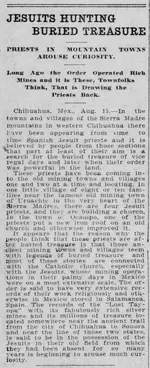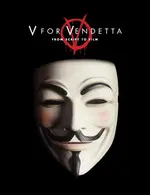Scorch wrote
First a belated welcome to Treasurenet Scorch!

I would ask a question first too, concerning your hypothetical one. What would be the motive for finding, uncovering and documenting a Jesuit mine? I think it would be a huge disappointment if one undertakes such a quest, with an eye toward gaining fame and recognition from academia. In fact academics have almost zero interest in old mines of any kind, Jesuit or otherwise. This is glaringly obvious when you start to research the matter, even when members of the Royal Geographic Society did a little investigating, the result was a rather noticable snore and no followup. Even the fame of the news media is fleeting - unless the mine is a most famous one, known among the general population and with a record of being covered by the news media, at best it will amount to the five minutes of fame from the old saying. Be prepared to endure ridicule and derision from the skeptics too, for the very concept of Jesuit mines and treasures is ridiculous to some people.
Outside of the treasure hunting community and some Jesuits ably re-writing their own history to erase unpleasant chapters, there is hardly any notice of this controversy. It fits the tempest in a teacup description. Ask some of your non-treasure-hunting friends what are their opinions about Jesuit mines and treasures, be prepared for the sidelong look and shrugging shoulders. The few that have done some reading on history of the southwest, are more than happy to accept the statements of father Polzer, Burrus and other Jesuits that there never were any mines nor treasures, after all the Jesuits had that vow of poverty, their sole goal was the saving of souls of the heathen. The record, which includes the suppression of the Society by a Pope, and one of the greatest amassing of wealth in history, speaks otherwise, but this has not been brought to the public notice in part because there is so little interest.
All that said, your best bet for making such a case is probably within one of the
not-lost mines like the Salero, Wandering Jew, the silver mines of Pozos near Cananea, which the local authorities claim is documented as being first discovered by Jesuits. Or you could simply go research the records on the mines referred to by the Catholic study (The Wealth of the Jesuits in Mexico) which were owned openly, you should have no trouble other than needing to travel to Mexico and spend time in dusty old files. There are a number of named mines which were documented according to earlier treasure hunters (whom almost certainly pilfered those documents) and have been searched for by numerous persons for centuries. It is not likely to be successful in finding one of those lost mines which were not rediscovered by earlier treasure hunters, besides having been hidden in the 1700s, mother nature has been helping to conceal and blend into the surroundings all this time. The odds are heavily against you finding one of those mines.
Father Nentvig's book Rudo Ensayo lists a number of mines as being associated with various missions - though the information is vague, and ownership might be classed as belonging to the local Indians (one of the dodges used by Jesuits in order to be able to honestly say they have no mines) you might be able to track down one or more, however finding the documentation will be very tough for we are hardly the first treasure hunters on the scene and there were no rules or laws about pilfering documents from old missions for many years.
Oroblanco
[/SIZE]












 I'm not here to judge anyone - past or present. However, I think in terms of the Origin story of the America's there should be some acknowledgement. But maybe that is what treasure hunters are for! Look at what Mel Fisher has accomplished over the years, in moving the 'Atocha' from modern myth to reality.
I'm not here to judge anyone - past or present. However, I think in terms of the Origin story of the America's there should be some acknowledgement. But maybe that is what treasure hunters are for! Look at what Mel Fisher has accomplished over the years, in moving the 'Atocha' from modern myth to reality. 
 >
>